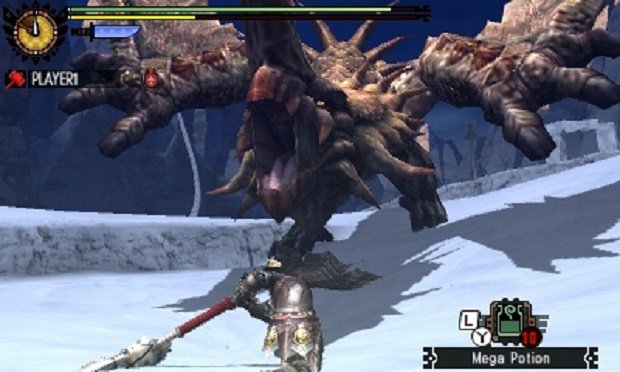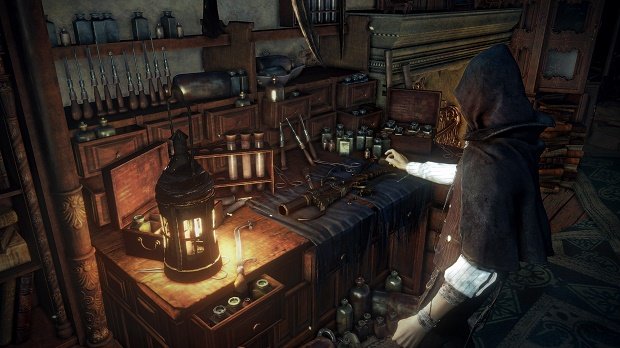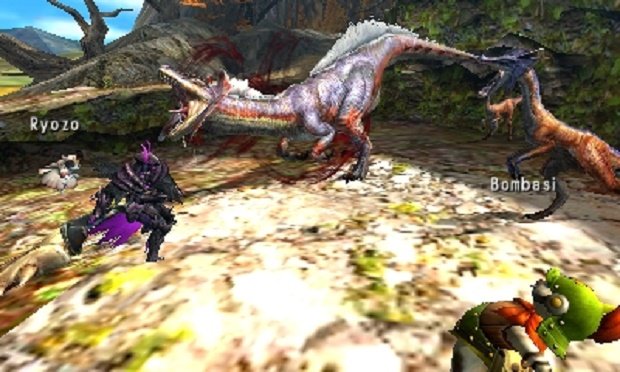How do niche games like Monster Hunter and Bloodborne go mainstream?
Demanding controls. Obtuse and unexplained mechanics. Soul-crushing difficulty. Million seller. One of these things seems like it doesn't belong with the others, but both Monster Hunter 4 Ultimate and Bloodborne have sold over a million copies since their respective launches. And both games are notorious for being as difficult and exacting (but also as rewarding) as learning a new language. So how did two semi-obscure, super-niche Japanese games attain a level of popularity typically seen by mainstream titles like Call of Duty or Assassin's Creed? The answer, as always, is complex and multi-faceted.

On the surface, these sales numbers seem to reflect the landscape of the gaming market in the first quarter of 2015. If you look at the list of our best reviewed games of the year so far, you'll see that half of them are remastered rereleases of old games. There's nothing inherently wrong with rereleased games, but it seems like we have been drowning in them for the last three months. The PS4 in particular, while full of exciting indie games, is hurting pretty badly for big-budget exclusives. Gamers are clearly hungry for something new - even if those games are sequels in two different long-running niche series.
Actually, Bloodborne and Monster Hunter 4 Ultimate's place as the latest in their respective franchises has served them well. Even though it's called Monster Hunter 4 Ultimate, it's actually the seventeenth game in the series (if you count all of its updates and spin-offs). Over the course of a decade, Monster Hunter's immense popularity in Japan means Capcom has had multiple chances to iterate, adding in new bits and tweaking the things that didn't work. While Capcom will always have die-hard fans, in order to be part of a larger discussion, Monster Hunter needs to be accessible. There are so many moving pieces, so many different items to craft and dozens of different weapons that each have their own unique control scheme. And for the longest time, Monster Hunter was simply keen on kicking you into a gorge filled with giant dinosaurs and gnashing teeth. When word began to spread that this entry was the easiest one to get into without sacrificing the challenge that defines the series, many people (myself included) finally decided to give it a shot and see what this Monster Hunting thing is all about.

It's the same with Bloodborne. As an extension of the Souls games, Bloodborne builds on past concepts and puts them in a new but familiar package. They may be initially off-putting, but each game in the series has built up a vocabulary that fans have learned over the years. Things like learning how to parry, what different stats mean, or knowing what items to bring on a particular encounter have been built up and compiled over a series of several titles practically making these games a genre unto themselves. It may be difficult to learn that vocabulary from scratch, but there are a wealth of resources available for players to learn the basics - wikis, forums, and even other players.
Both Monster Hunter and the Souls series' initial audience may be small, but they also have some of the most evangelical fans in video games. These hardcore zealots know these games are absurdly difficult, and many are more than willing to offer up advice, exchange tips, or even walk new players through the initial moments to get players up and running with the basics. The thing that pushed me over the edge into picking up Monster Hunter 4? One of my Twitter buddies told me that he'd teach me how to play if I picked it up. Knowing that I had a guide to walk me through this strange new land (along with the newly implemented tutorial sequences) made the prospect of giving the series an honest try that much more palatable.

There's a certain mystique surrounding both Bloodborne and Monster Hunter. The very nature of Dark Souls' (and by extension, Bloodborne's) secrets mean that people continue to discuss these games far longer than most typical blockbusters. Most games writing deals in previews, the build-up to the release, with games usually forgotten about a week after they're out. But games like Bloodborne and Monster Hunter don't reveal themselves right away. They take dozens of hours of play just to get to a point where you think you might have a handle on them. But even after hundreds of hours, new elements continue to be discovered, and that's incredibly exciting in a world where entire playthroughs of games like The Order can be quickly posted and disseminated on YouTube. The way players continue to eke out new strategies and find new details about Dark Souls' plot or Monster Hunter's ferocious beasts years after those games have been out ensures that they stay fresh and exciting long after they should have disappeared from our collective interests. Being part of that conversation, of wanting to discover those secrets for yourself and share them with others is alluring, and many people (like myself) finally took the plunge.
While it's unlikely that these games will ever reach the same level of popularity as the latest shooter, it's still nice to see two games that reward dedication, experimentation, and communion finally get the respect and recognition they deserve. It took a long time for these games to get to this point, but both Monster Hunter and Bloodborne have finally 'made it'. And who knows? Maybe more mainstream games will look to them for inspiration, now that more people are falling in love with what makes these difficult games fascinating.
Weekly digests, tales from the communities you love, and more



